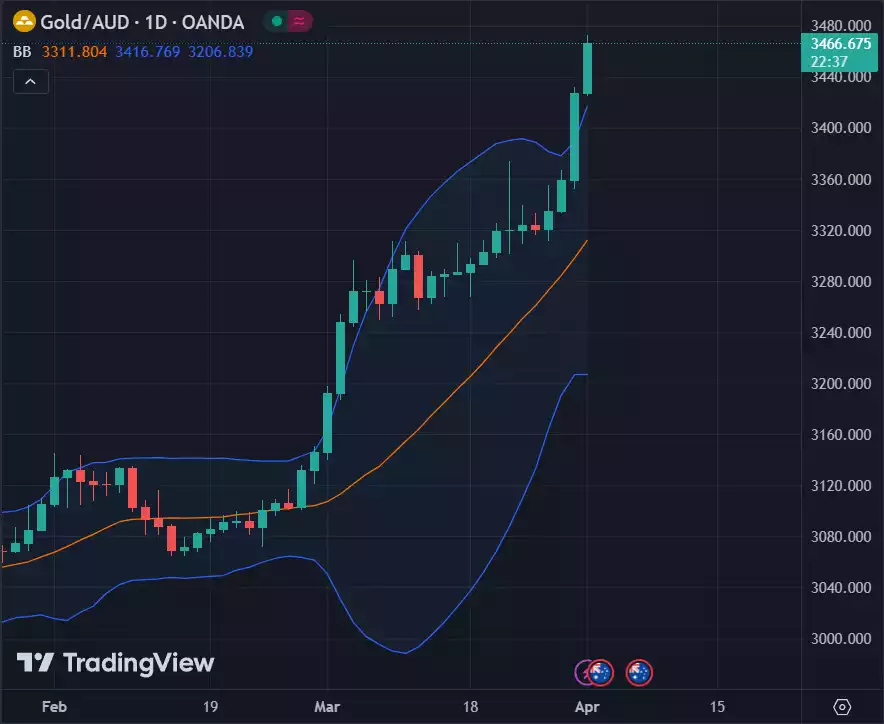Gold Passes $3,470 - Another Huge Breakout
News
|
Posted 02/04/2024
|
2075
Gold prices blasted to new heights again this week, driven by growing investor confidence in anticipated U.S. interest rate cuts following a dip in a key inflation metric and stock market fears.
This surge follows Thursday's record-setting close at $2,238.40 an ounce on Comex. The metal saw an impressive 8.9% increase in March and an 8% rise for the quarter. At the time of writing, Gold/AUD is hovering around $3,470 per ounce. Gold has been dominating investing headlines with its recent breakout and has had detractors doing 180 degree turns to explain why it has been so successful.
The Gold/AUD chart shows a massive Bollinger Band breakout on the Daily timeframe. Notice the last two daily candles bursting out of the bands, signalling an aggressive readjustment to the upside.

The recent rally in gold has been partially fuelled by softer U.S. inflation data, which boosted expectations of potential interest rate cuts by the Federal Reserve as early as June. Federal Reserve Chair Jerome Powell emphasised that the recent inflation data met expectations and didn't raise significant concerns about inflation risks. Market sentiment now indicates a strong likelihood of rate cuts in June, with a total of 75 basis points expected by the end of the year. Lower interest rates make gold more attractive as an investment by reducing its opportunity cost.
Meanwhile, the stock market has not gotten the same powerful boost from this softer inflation data. This shows that there is more detail under the surface than just one news announcement. While most financial news articles are attributing gold's success solely on inflation data, the major factor remaining is if Jerome Powell's insistence that the U.S. economy is strong is correct. If it is being exaggerated in an effort to have an excuse to hold interest rates high, the stock market could see major whiplash.
The fear of uncertainty seems to be the major draw to gold at the present time. Emerging market central banks have also joined the buying spree and helped tighten supply. Despite the typically inverse relationship between gold and the dollar and Treasury yields, gold's ascent persists due to a unique combination of global factors, including geopolitical tensions and domestic political dynamics.
The record-breaking surge in gold prices suggests a shift in investor sentiment and reaffirms gold's role as a safe-haven asset amid economic uncertainties.